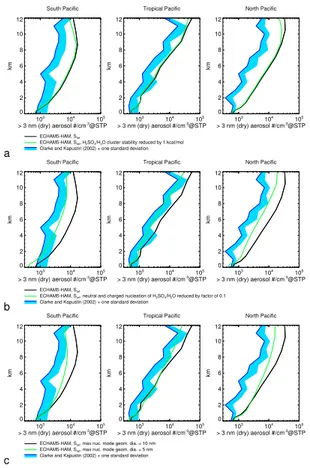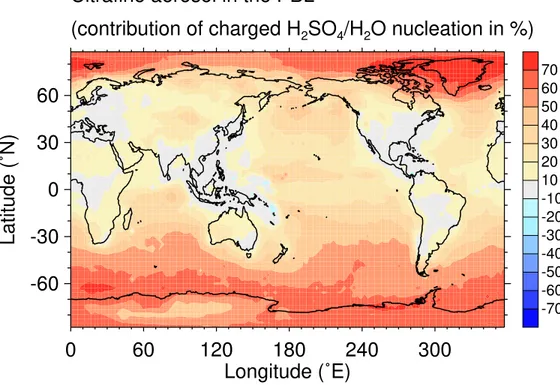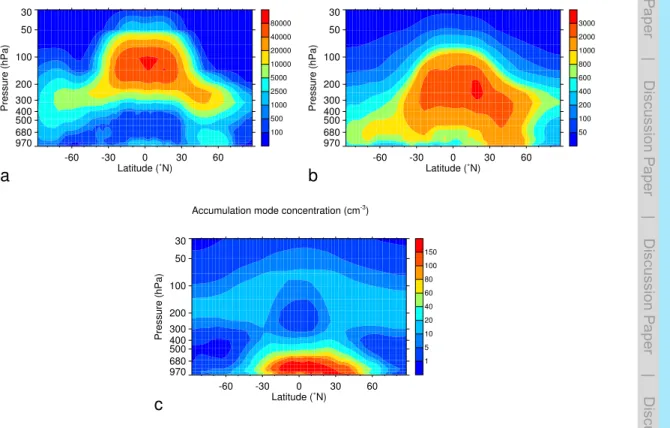Aerosol nucleation and its role for clouds and Earth's radiative forcing in the aerosol-climate model ECHAM5-HAM
Texto
Imagem


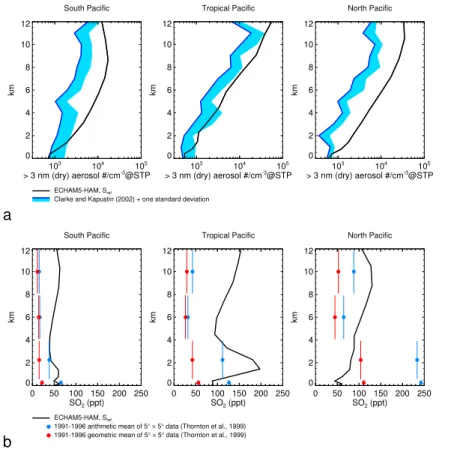
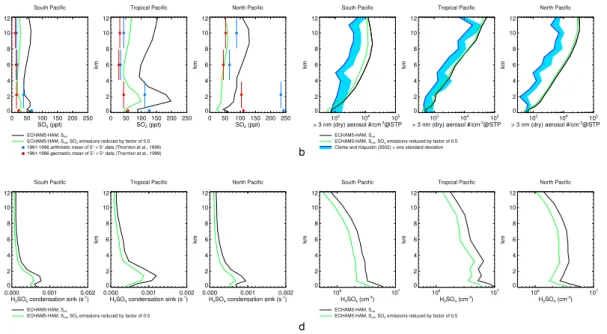
Documentos relacionados
Here we investigated the relationship between forcing and climate response for fires using a global Earth system model that included direct and semi-direct aerosol e ff ects.. In
A nucleation scavenging scheme that diagnoses cloud scavenging ratios for aerosol mass and number distributions based on cloud droplet and ice crystal number concen- trations has
cloud condensation nuclei: processes and uncertainties evaluated with a global aerosol mi- crophysics model, Atmos. and Seigneur, C.: Investigative modeling of new pathways
Large variation in microphysical characteristics of the boundary layer clouds and the aerosol concentration were found, and in particu- lar the CDP cloud droplet number concentration
Weekly cycles have been analysed in surface observations of sulfur dioxide and sul- fate concentrations, satellite observations of aerosol optical depth, cloud properties (cloud
fire aerosol radiative effect (RE) at TOA, radiative effects due to aerosol–radiation interactions (REari), due to aerosol–cloud interactions (REaci), surface-albedo changes (REsac)
extinction in the layer throughout the year, and (ii) transport of sulfate precursors by convection followed by nucleation is responsible for the formation of the aerosol
We use a global aerosol microphysics model to estimate the effect of particle formation through activation nucleation in the boundary layer (BL) on cloud droplet num- ber
